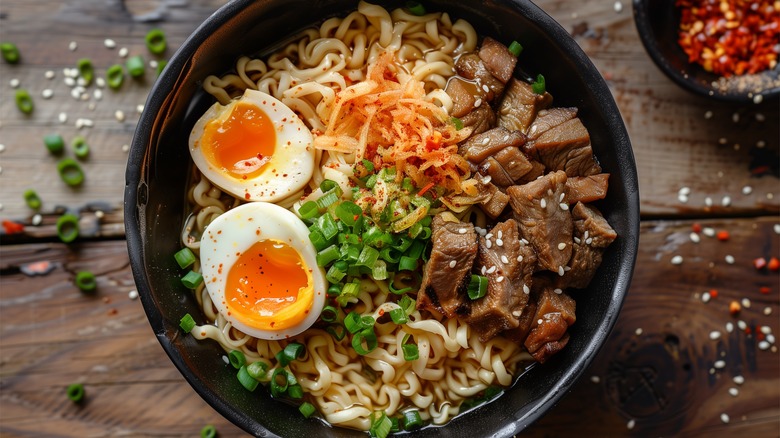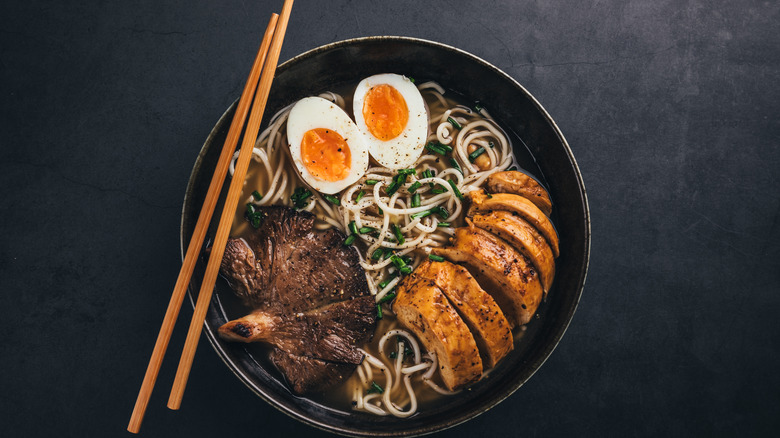The 2 Key Ingredients For The Most Flavorful Homemade Ramen
We may receive a commission on purchases made from links.
A good bowl of ramen warms the soul with a steamy, umami-rich broth and flavorful ingredients. Though the best ones are often found in a restaurant, with the right components, you can make your own delicious ramen at home. We spoke to an expert who has just the ingredients your homemade ramen needs.
Building a strong foundation is the first step to good ramen. Of course, the toppings you use also determine the outcome, but without a solid broth, there's no depth. For Chef James Bailey, Executive Chef at Momofuku Las Vegas, two ingredients come to mind when building a broth for ramen. "Starting with a flavorful base will set you up for success, and using a high-quality soy sauce or tare is key," he says. Soy sauce brings a savory boost to things like rice or sushi, but a choice one adds richness to ramen. In our ranking of popular soy sauce brands, Kikkoman Soy Sauce came out on top for its masterful blending of sweet, savory, and tangy notes.
Tare is the other key Bailey recommends for delicious ramen. It features a mix of different seasoning components that each chef or home cook makes based on their tastes. This can be a variety of soy sauces or a blend of miso and other pastes and sauces. Ultimately, tare is the umami-rich ingredient you should always add to ramen. If you don't know where to start, whip up this Japanese tare sauce with mirin, ginger, and sake.
What else should you add to homemade ramen?
While soy sauce and tare serve as the foundation for delicious homemade ramen, Bailey likes to finish it up with another key addition. "Using chicken or pork fat will round out the final bowl of ramen, along with toppings that you really enjoy," he says. Animal fat lends the ramen broth a richer taste, as well as a silky mouthfeel. Aside from the bones, pork fat is often an integral ingredient in tonkotsu ramen. You can simmer pork fatback along with the pork bones to extract its flavor. If you're choosing to use poultry, fry up some chicken skin in a skillet and use the fat in your broth.
As Bailey mentioned, the final step should be adding your favorite toppings to the bowl of ramen. You can hone in on umami flavors by placing strips of nori and sauteed mushrooms on top. For an earthier touch, add bean sprouts and diced scallions to your ramen. Of course, classic toppings like soft-boiled eggs, sweet corn kernels, and bamboo shoots always taste great with ramen. Additionally, you can bulk up the noodles and broth with pork belly, shrimp, tofu, or ground pork.

